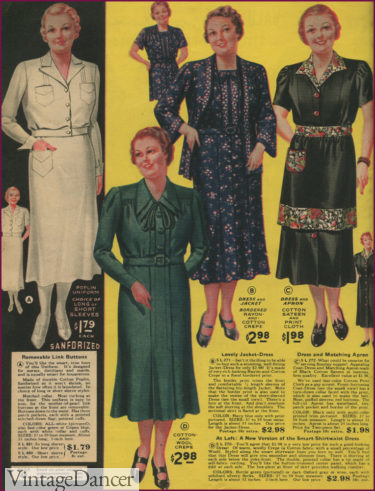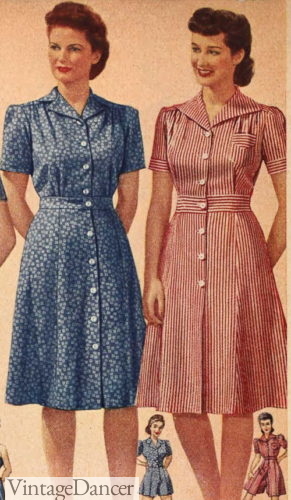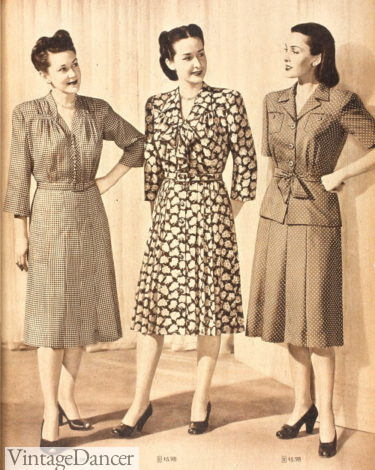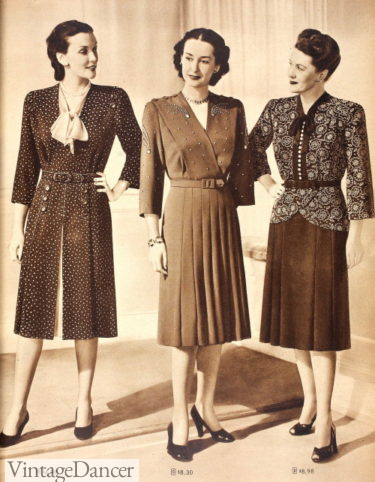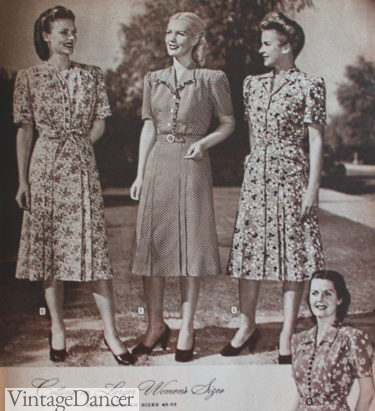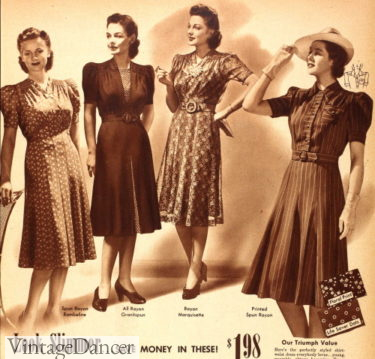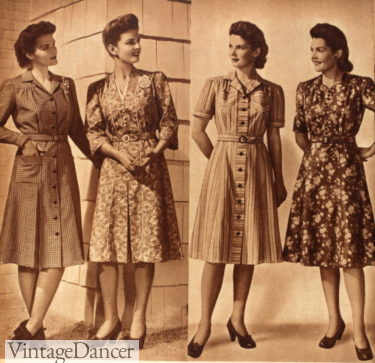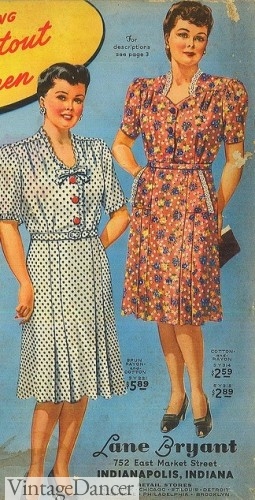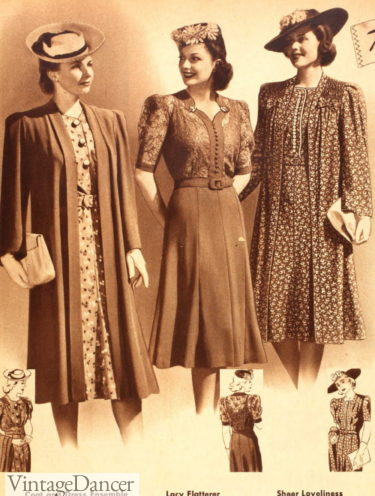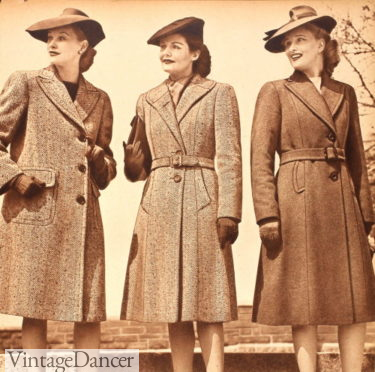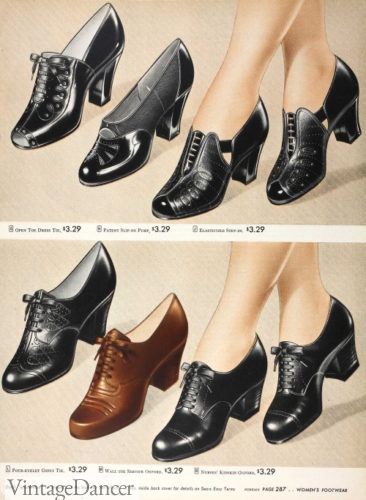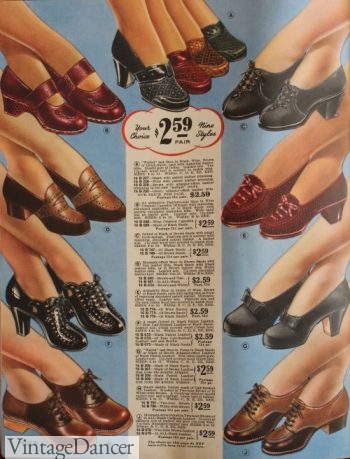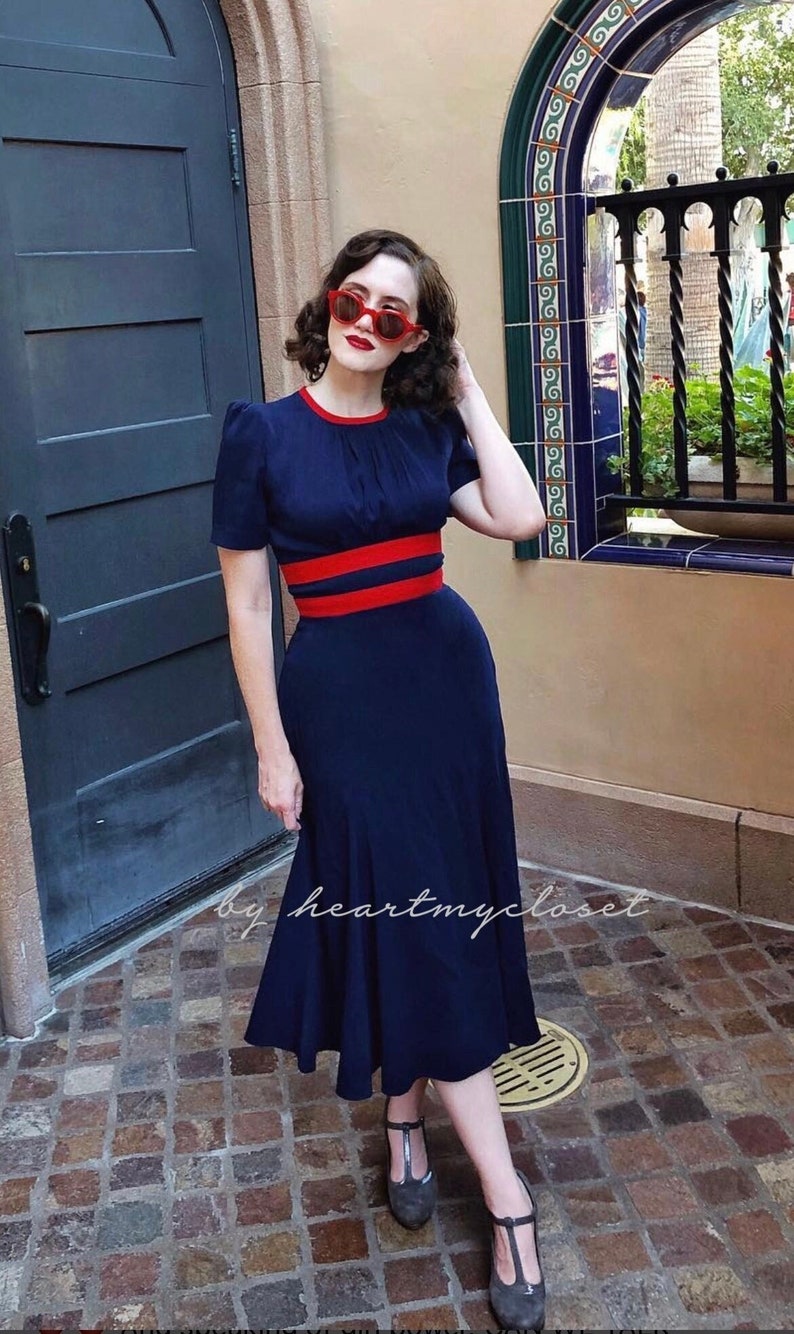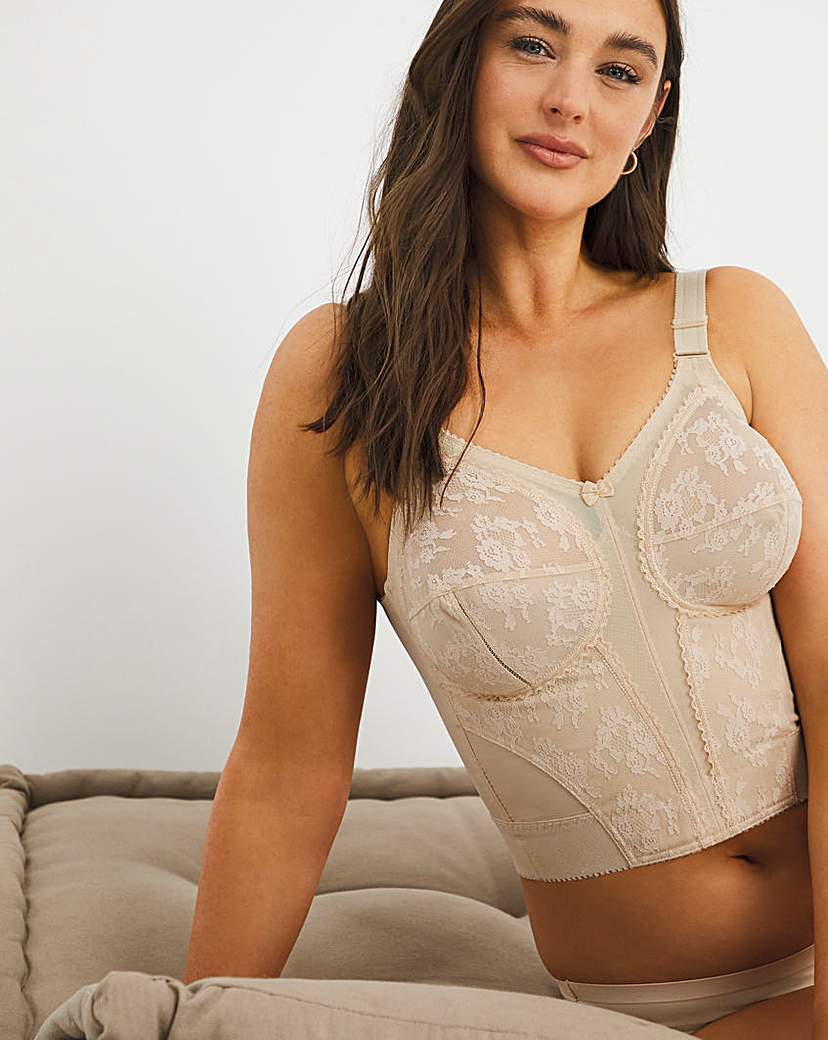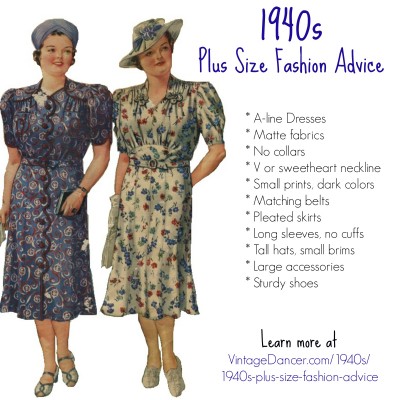
While the ideal body type of the 1940s was the curvy hourglass, few women were naturally that shape. Stout, tall, thin, and short women all have their fashion challenges to achieve an ideal 1940s look. By following a set of fashion rules set forth by fashion and beauty experts, any woman could achieve an elegant look while wearing 1940s clothing. It wasn’t just a matter of finding clothing in your “size” — it was also a matter of choosing the right designs that avoided accentuating the wrong areas.
The following tips and advice are from several 1940s beauty books, including “The Original Bonomo Hollywood Success Course Through Beauty of Face and Form” by Joe Bonomo, “Beautify Your Personality” by Hattie Marie Marsh, and “Beauty After Forty” by Edyth Thornton McLeoud.
Some of the advice wont apply today, as tastes have changed. So take this advice with a grain of salt.
Thank you to plus size fashion blogger New Vintage Lady for many of the Lane Bryant catalog scans featured here. NVL also has an excellent line of printed patterns just for plus size ladies here on Etsy.
Skip the history and shop for 1940s plus sizes dresses and reproduction clothing.
1940s Plus Size Fashion Do’s and Don’ts
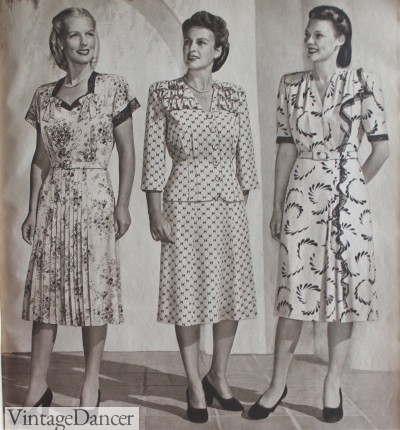
These three dresses are suited for plus sizes because they lack collars, have small patterns, fit well, and feature longer sleeves.
Dresses and Suits
The princess cut dress is your best style. Dress bodices with side sweeping drapes provide shape where there is none (such as the dress on the right). Suits are not as flattering as dresses but if you must wear one, make sure the jacket fits loose, not tight, over the bust and hips. Your dress should also fit you well. The biggest mistake stout women make is wearing clothes that are too tight or too loose.
- 1941 plus size dresses for fall winter
- 1940s plus size fall fashion- small prints and dark colors, minimal trim
- 1942 casual dresses
- 1946 daytime dresses
- 1946 afternoon dresses
- 1947 house or day dresses
Deep V, square, or sweetheart necklines will be the most becoming. Avoid round or boat neck lines. A high neckline is OK with the right statement necklace. Collars are usually not becoming. In general, avoid any shape that is circular on the dress or blouse and even jewelry such as button earrings and pearls, especially if you also have a round face.
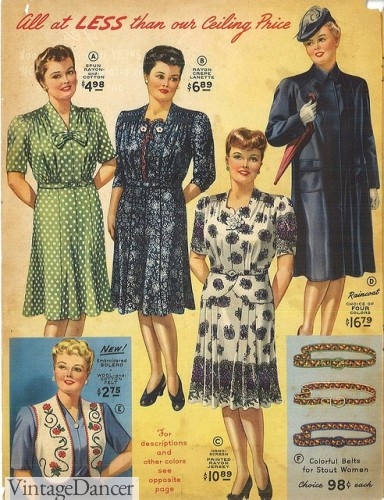
1945 Lane Bryant Plus Size Dresses- Deep V, collarless, Sweetheart necklines on dresses with vertical pleats. Sleeves and long and uncuffed to.
- 1941
- 1943
Skirts: A plain A-line skirt that flares a bit at the hem is ideal. Skirt length should be below the knee or a little longer if you are also tall. Avoid any fancy trim around the hem if you have heavy legs. Add horizontal trim if you have thin legs. A separate skirt should be the same color as the top. Avoid a white blouse with a dark skirt.
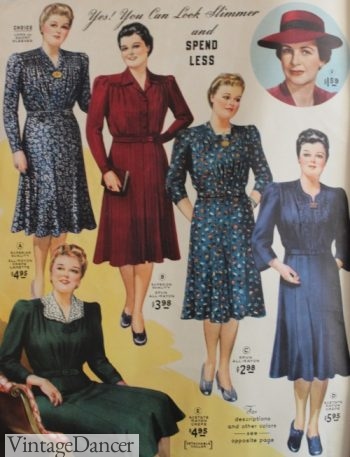
1940s plus size fall fashion- small prints and dark colors, minimal trim
(One modern tip on length that would work for the 40s as well: Where your calf curves into the back of your knee, right before the top of the curve is the best skirt length for you. If it is shorter, to where the knee curves back out to the thigh or at the center curve of the calf, you will look wider. This TIP is magic. Try it.)
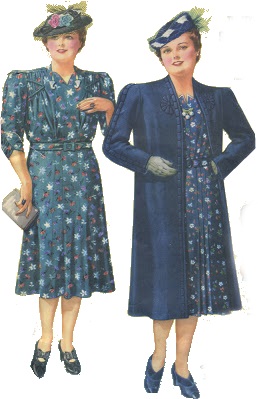
Plus size dress and long coat that matches are best together.
Long, loose, sleeves are better than short or mid length sleeves. A 3/4 length sleeve may be OK for you. Test and see. Sleeves are best without cuffs
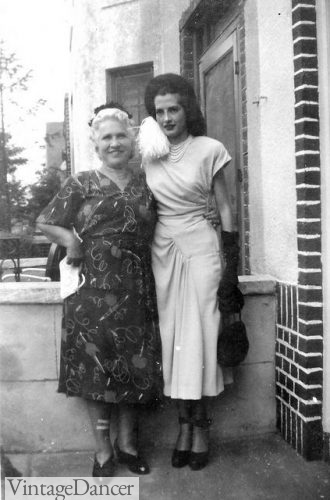
Lovely late 1940s plus size fashion- She had fun with that print!
Colors: Darker shades are better. Never white or even light pastel shades unless your dark complexion allows for it. Small prints or vertical stripes are preferred over large patterns. Avoid big plaids, checks, and horizontal stripes. See common colors in 1940s fashion here.
- 1945 Lane Bryant Plus Size Dresses
- 1945 Plus Size Dresses from Lane Bryant Catalog Co
Fabrics: Should be matte (never shiny) and flat (never textured). Thin materials that don’t cling to the body look best. Clingy fabrics as well as thick fabrics will only accentuate your size. Cotton and cotton-like Rayon are both good choices.
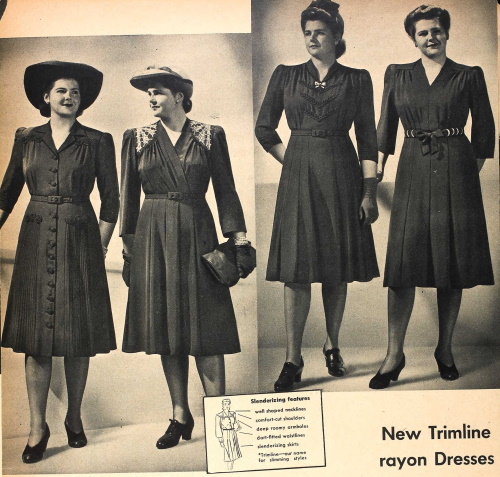
1942 matte black dresses
Formal dresses with a long panel of sparkling beads would be suitable, but never a full gown of all beads and sequins.

1941 lace dress with jacket
Coats: Choose a long coat over shorter styles. Absolutely no double breasted suits should be worn. An open coat with thin lapels adds length with slim lines over spring dresses.
- 1941 dresses with jackets
- 1943 wool coats
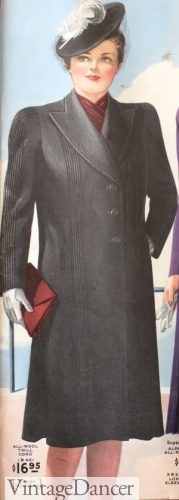
1941 black coat
Shoes: Choose sturdy thick heeled shoes as high you can comfortably walk in. Avoid flats and shoes with narrow heels. Shop wide shoes here.
- 1945 wide fit oxford shoes
- 1940s wide shoes- low heels and oxfords
Hats: Moderate brims that don’t extend too much beyond your head width are ideal. Look for straight or turned up brims (front or back) with some height to the crown. A pointed crown or asymmetrical square crown are also things to look for. Tricorn hats are good too. Never wear small perch hats. Shop 40s hats.
Jewelry: Chunky beads and heavy metals in an assortment of bold and contrasting colors are not only fun but flattering. They provide interest to your otherwise simple dress. Avoid small or dainty jewelry.
Accessories: A matching, narrow, self fabric belt may be OK. Purses should also be large and flashy, just like jewelry.
Furs: Choose short hair fur coats. Avoid long haired fur scarfs and collars.
Lingerie: Foundation is everything. A long line bra and girdle will do wonders and help your posture. Bras should lift with some point shaping, but shouldn’t hike up the girls. Girdles should not squeeze but smooth out any bumps and may provide you with a waistline too. (THIS IS critical. Read about 1940s lingerie here.)
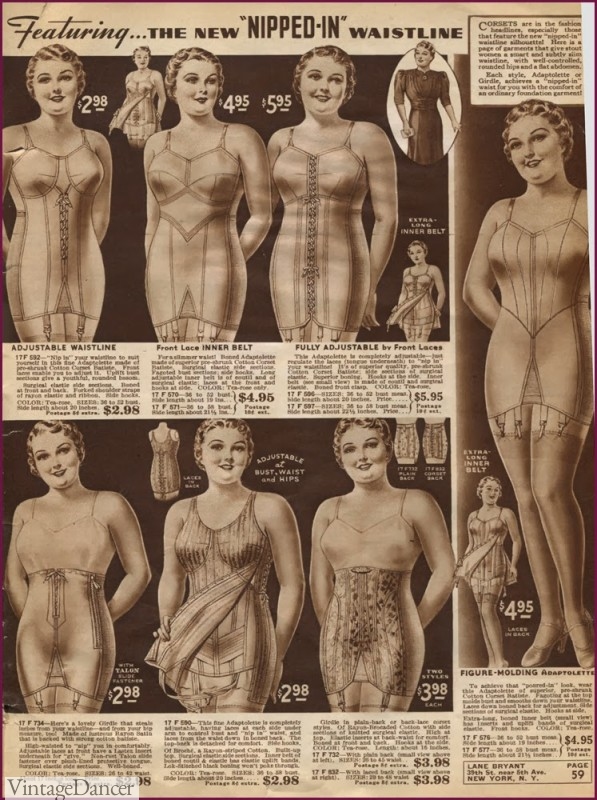
A one piece corset/bra combo was a common girdle for plus size women.
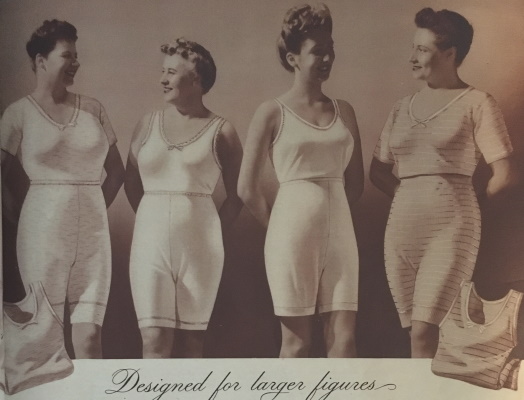
1944 women’s nylon knit underwear
Plus Size Fashion Variations
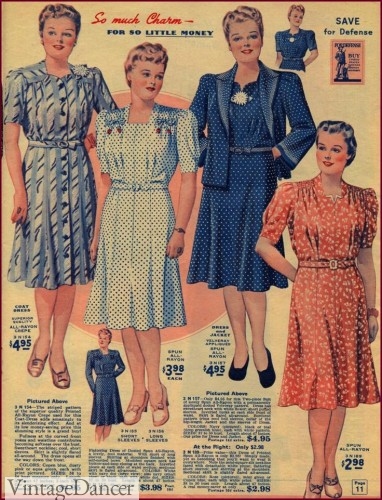
1942- These dresses are good for plus sizes- Modest necklines, gathers at the shoulders, simple flared skirts and small prints.
Wide hips: A column of fabric or trim from the shoulders to the waist will make the hips look smaller. Larger shoulder pads, trim around the neckline, and vertical lines down the bodice will all help.
Narrow hips: Choose tops, dresses and suit jackets with a peplum (what is a peplum dress?).
Large chest: Look for dresses and tops with soft drapery around the neckline but no lower than the chest shelf. Deep necklines can be very sexy too. Avoid shirt dresses (shirtwaist) with front buttons.
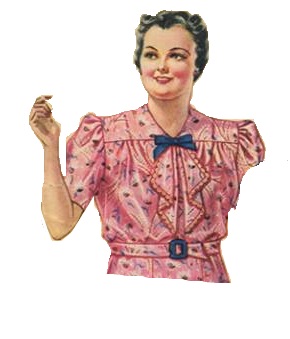
A ruffled jabot helps enlarge a small chest
Small Chest: Add bust enhancers, wear deep square necklines and drape your neck with scarves. A jabot (frilly fabric puff in the center) on dress bodices and blouses will also make you appear larger.
Wide Shoulders: Dolman sleeves, long thin lapels, and the raglan shoulder are all width minimizers. Avoid masculine details like pointed collars, wide lapels, and shirt waist buttons.
Short Neck: Choose flat necklines over collared ones. Choose short or up-do hair styles. Wear long necklaces and brimless taller crown hats.
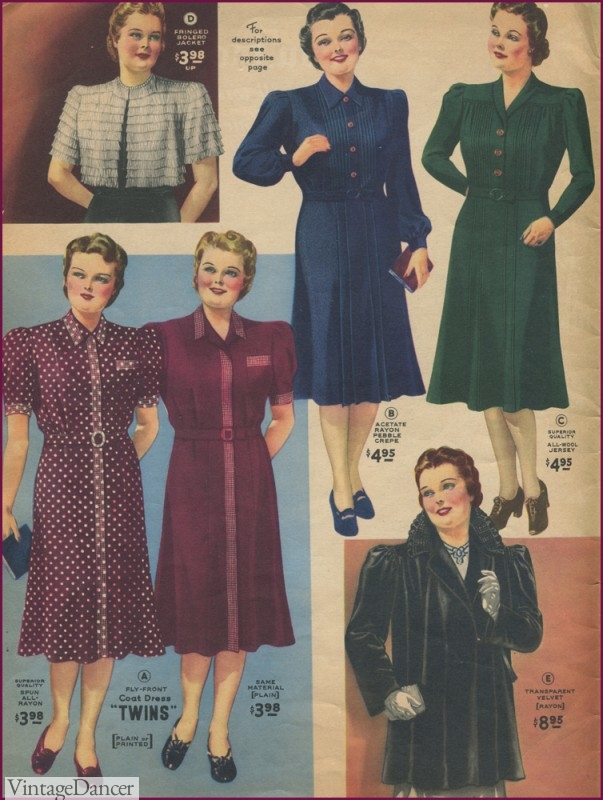
Dark colors minimize width better than light colors. Belts, if worn at all, should be matching and small.
Apple Shape (heaviest in the middle): Choose skirts with vertical draped layers, soft pleats or gathers and tops with a deep V neck or V shape trim that extends to your waist. Don’t wear belts or if you must only thin self fabric belts.
Large arms: Dolman sleeves or loose but not baggy long sleeves. Sleeves should be plain. Choose gloves in the same color as your dress. If you arms are long, choose wrist length sleeves or shorter 3/4 length sleeves and wear bright colored gloves or a cuff bracelet.
Short Arms: Wear long fitted sleeves or very short cap sleeves. Don’t wear sleeves with cuffs or wear cuff bracelets.
For another look at 1940s fashion history for plus size women, read this article here.
Fashion is in the Eye….
I find it somewhat baffling that despite all this advice from multiple fashion “experts” that mainstream clothing manufactures of the 1940s didn’t follow these rules. In most cases they went the opposite direction. Even Lane Bryant, one of the only exclusively plus size catalog retailers, choose bold prints, shirtwaist dresses, short sleeves, and belts on nearly all their dresses. Sears, Montgomery Ward’s, and other catalogs were no different. Perhaps they were just following what was trendy at the time, regardless of whether it was flattering on all sizes or not. It certainly made finding pictures for this article more difficult.
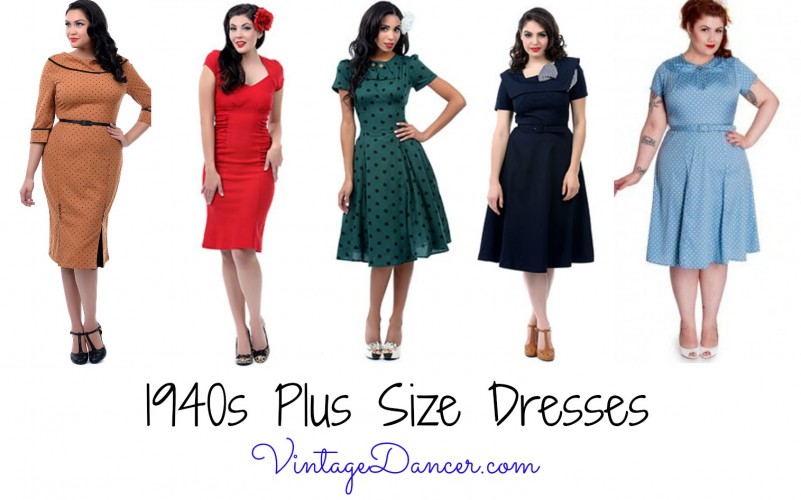
1940s style dresses in Plus Sizes. Shop these and more here.
Ultimately, fashion is in the eye of the beholder. Current trends seem to favor snug fitting dresses, light colors, and bold prints. Despite the rules above, they actually DO look good on many women. Fashion, then, is trial and error. Try on all styles, all colors, all patterns and use your (and a friend’s) critical eye to decide what flatters your body type best. These guidelines can be helpful. Many are timeless recommendations still being prescribed today. Learn from them, challenge them, and you will be all the better dressed for it.
More 1940s body types advice:
1940s Fashion Advice for Tall Women
1940s Fashion Advice for Short Women
